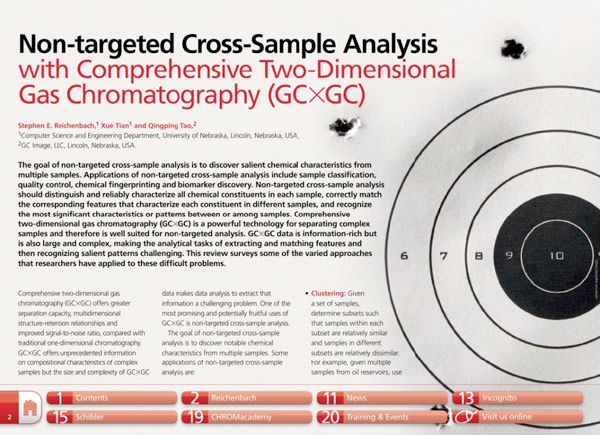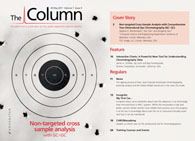Non-targeted Cross-Sample Analysis with Comprehensive Two-Dimensional Gas Chromatography (GC×GC)
Comprehensive two-dimensional gas chromatography is a powerful technology for separating complex samples and therefore is well suited for non-targeted analysis.
The goal of non-targeted cross-sample analysis is to discover salient chemical characteristics from multiple samples. Applications of non-targeted cross-sample analysis include sample classification, quality control, chemical fingerprinting and biomarker discovery. Non-targeted cross-sample analysis should distinguish and reliably characterize all chemical constituents in each sample, correctly match the corresponding features that characterize each constituent in different samples, and recognize the most significant characteristics or patterns between or among samples. Comprehensive two‑dimensional gas chromatography (GC×GC) is a powerful technology for separating complex samples and therefore is well suited for non-targeted analysis. GC×GC data is information-rich but is also large and complex, making the analytical tasks of extracting and matching features and then recognizing salient patterns challenging. This review surveys some of the varied approaches that researchers have applied to these difficult problems.
University of Rouen-Normandy Scientists Explore Eco-Friendly Sampling Approach for GC-HRMS
April 17th 2025Root exudates—substances secreted by living plant roots—are challenging to sample, as they are typically extracted using artificial devices and can vary widely in both quantity and composition across plant species.
Thermodynamic Insights into Organic Solvent Extraction for Chemical Analysis of Medical Devices
April 16th 2025A new study, published by a researcher from Chemical Characterization Solutions in Minnesota, explored a new approach for sample preparation for the chemical characterization of medical devices.














